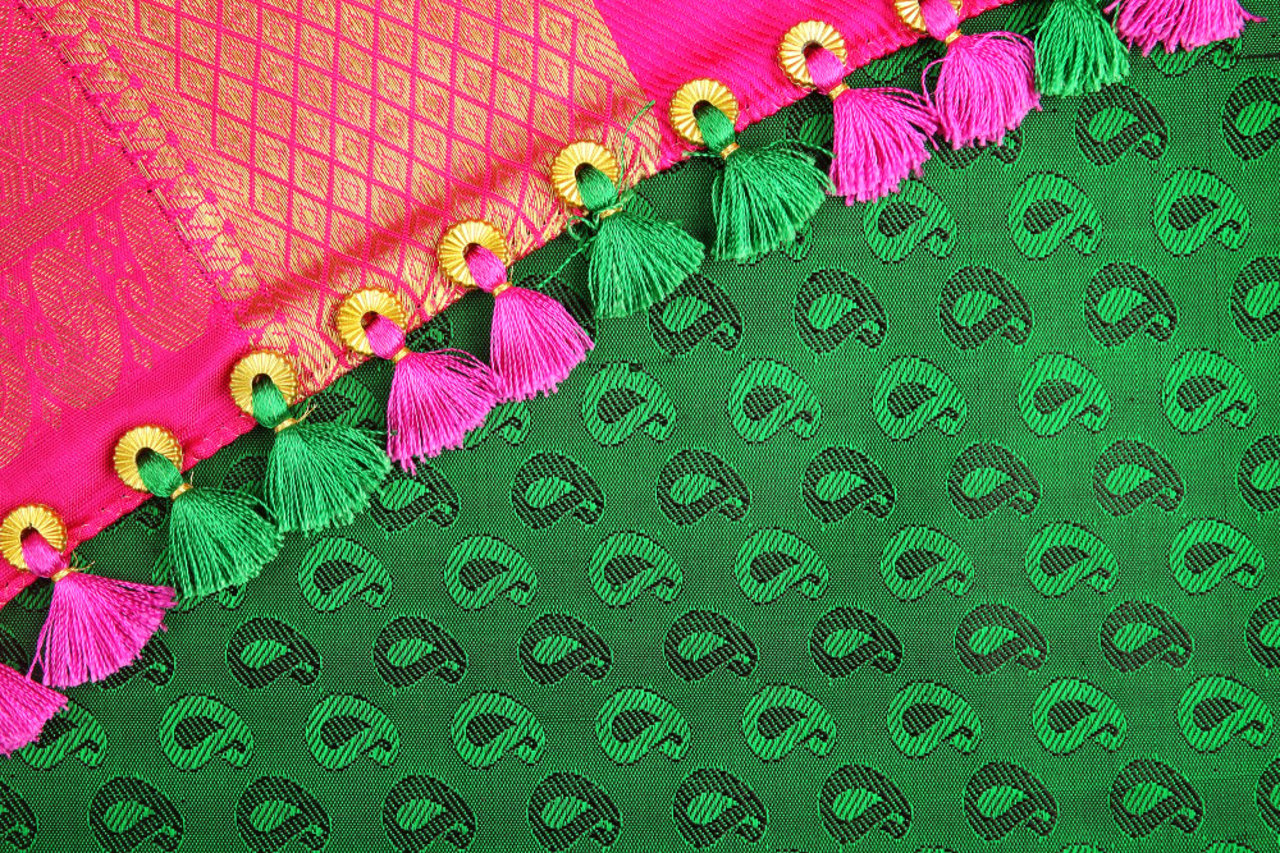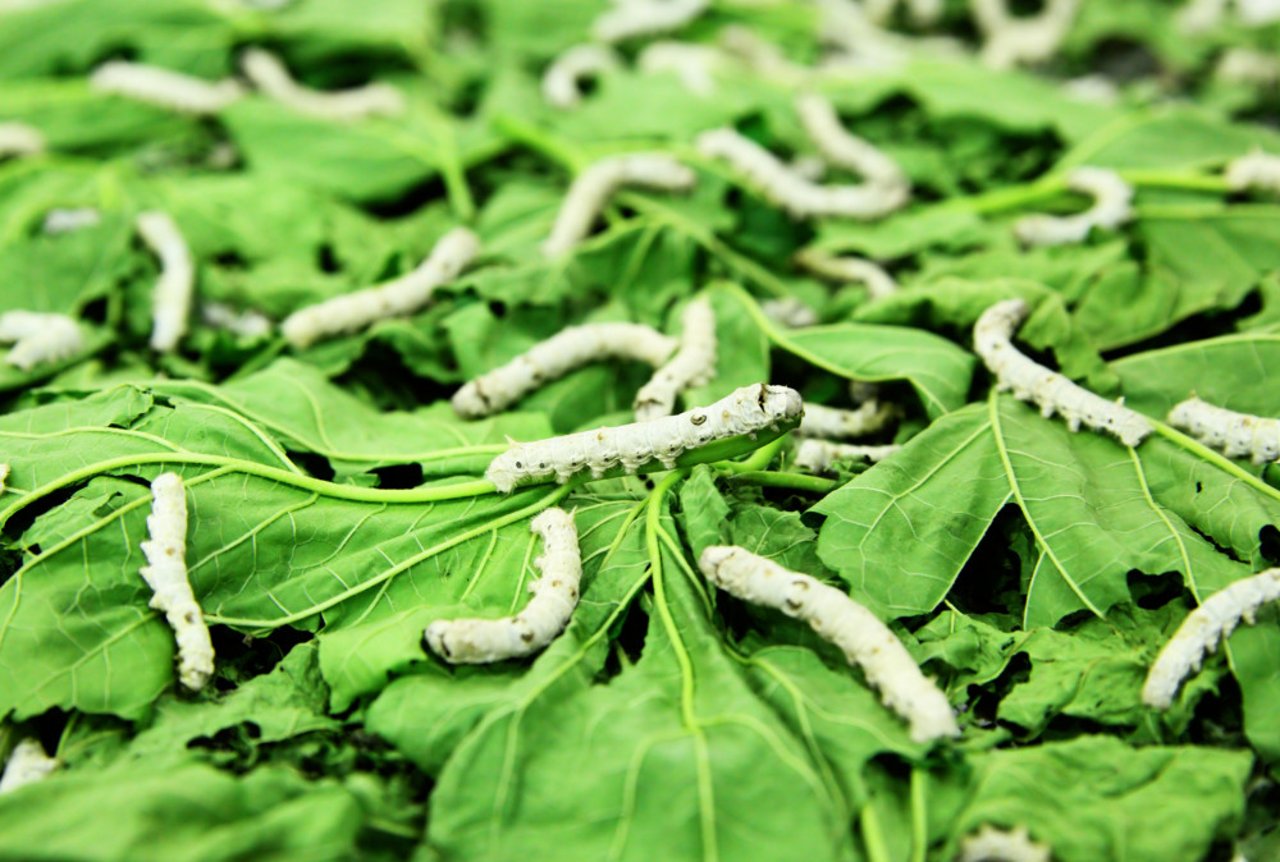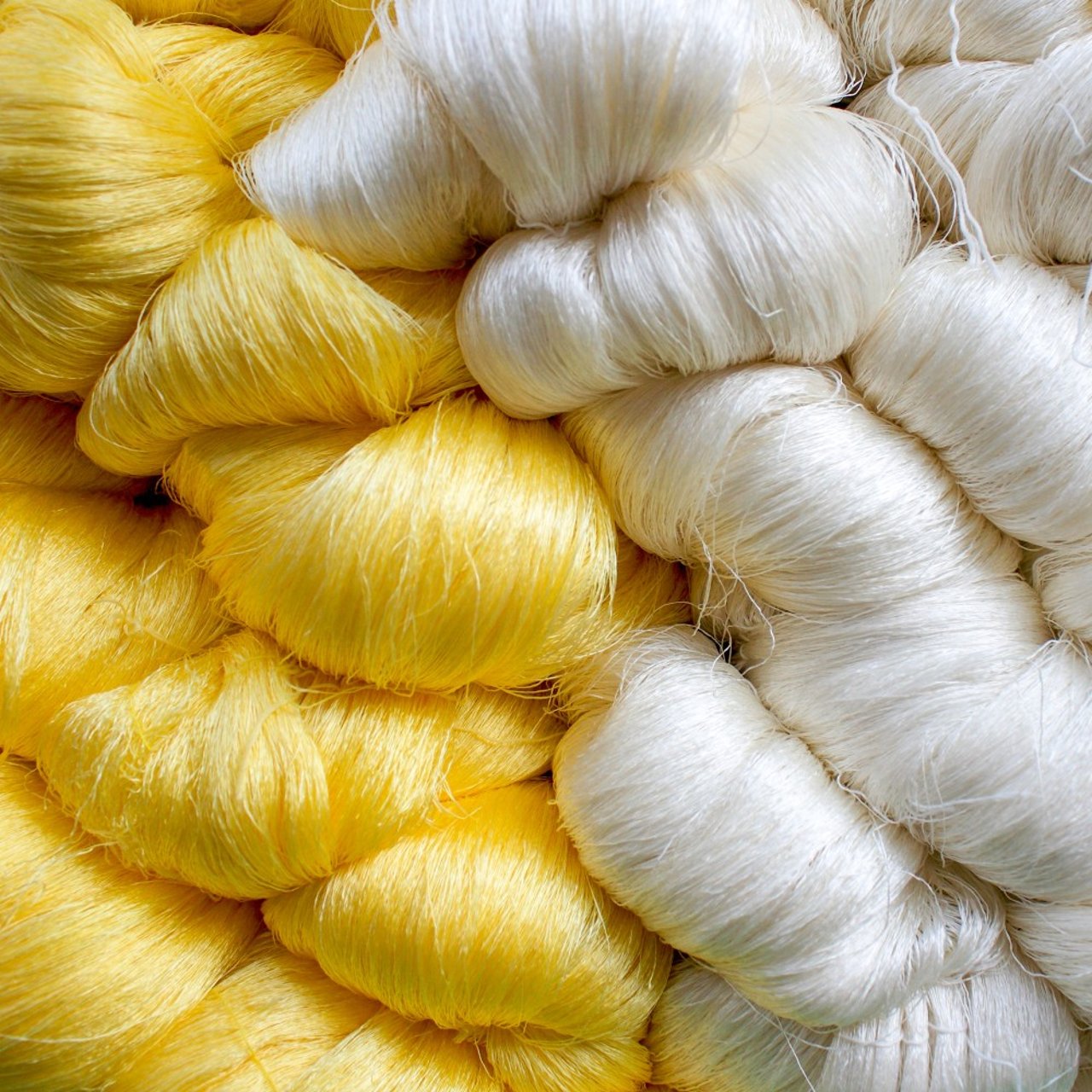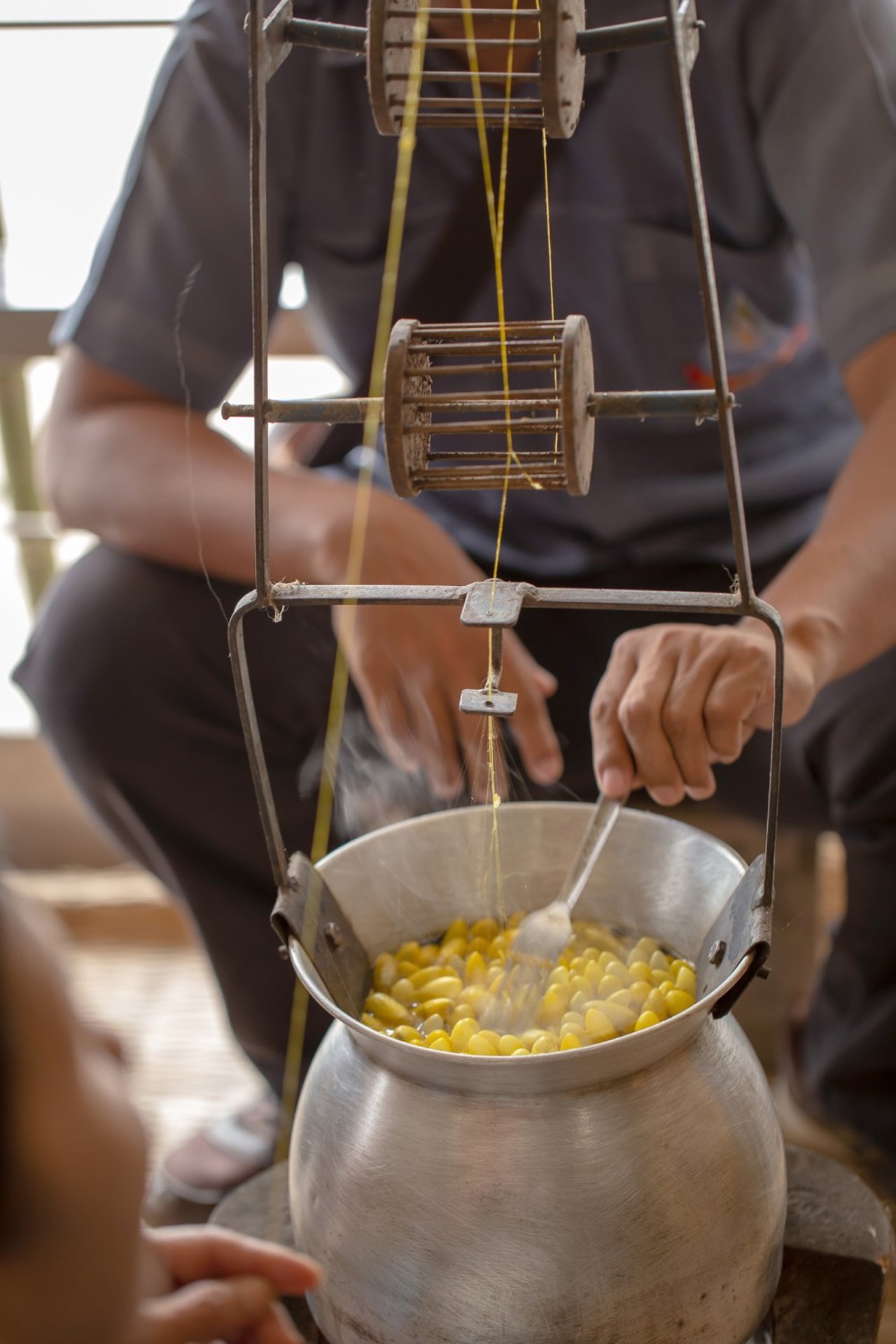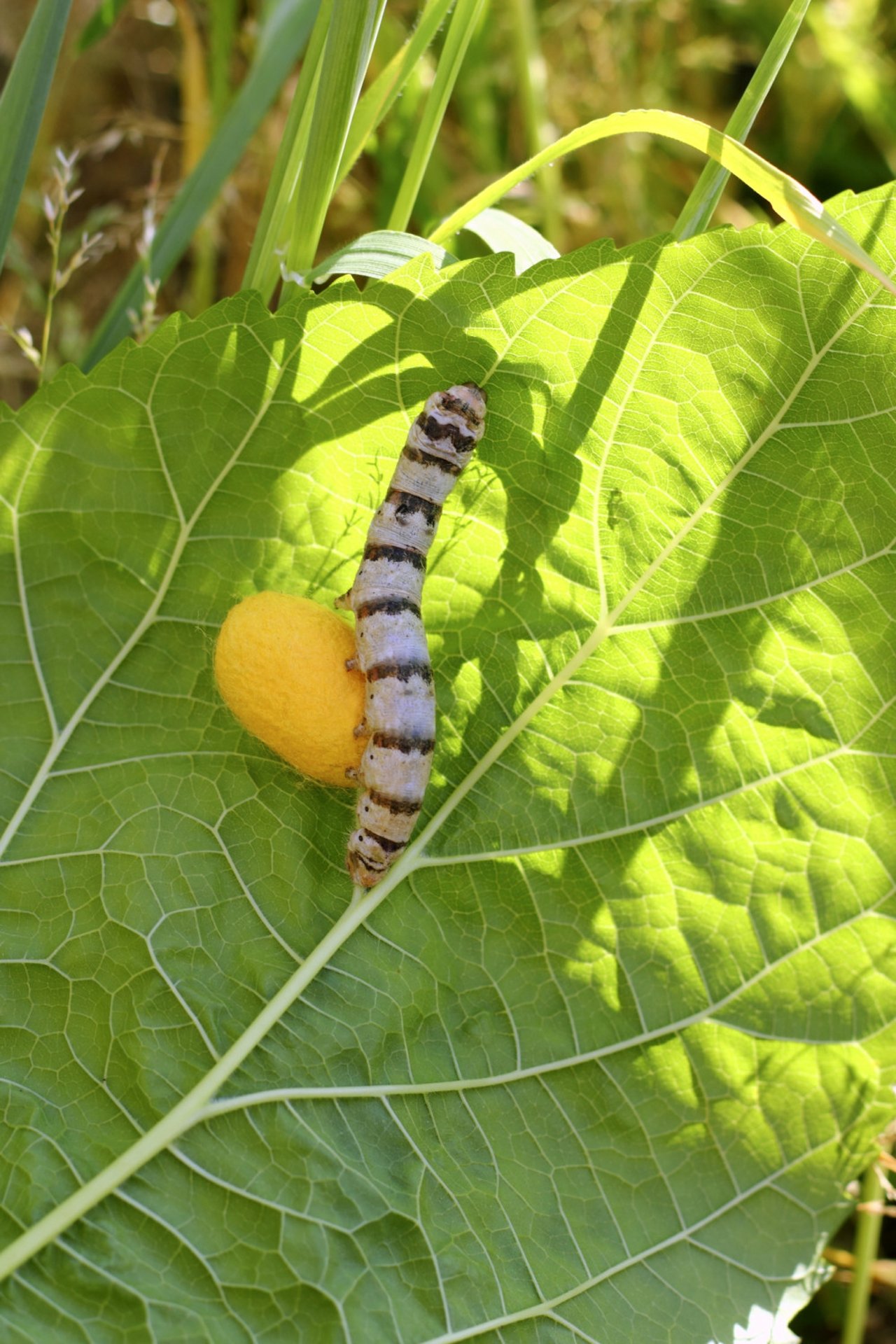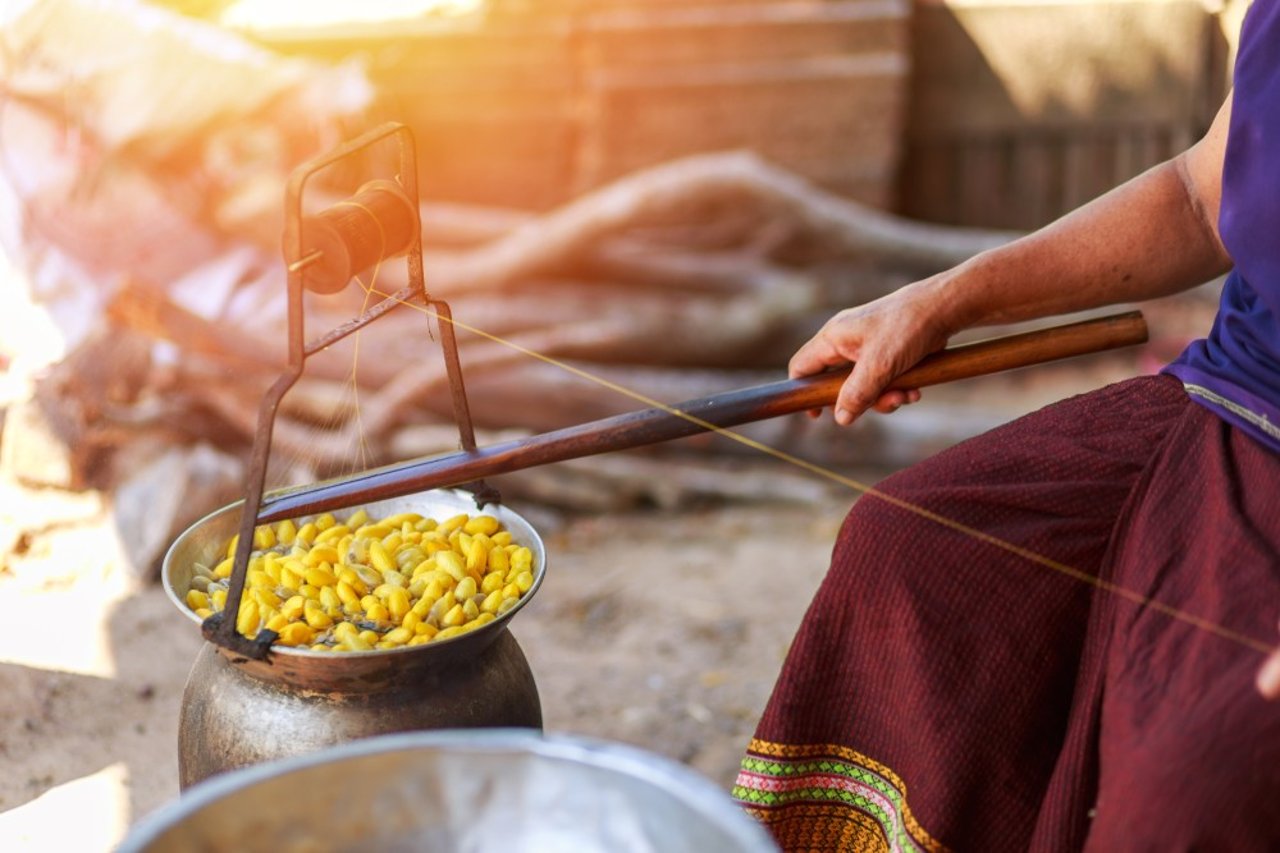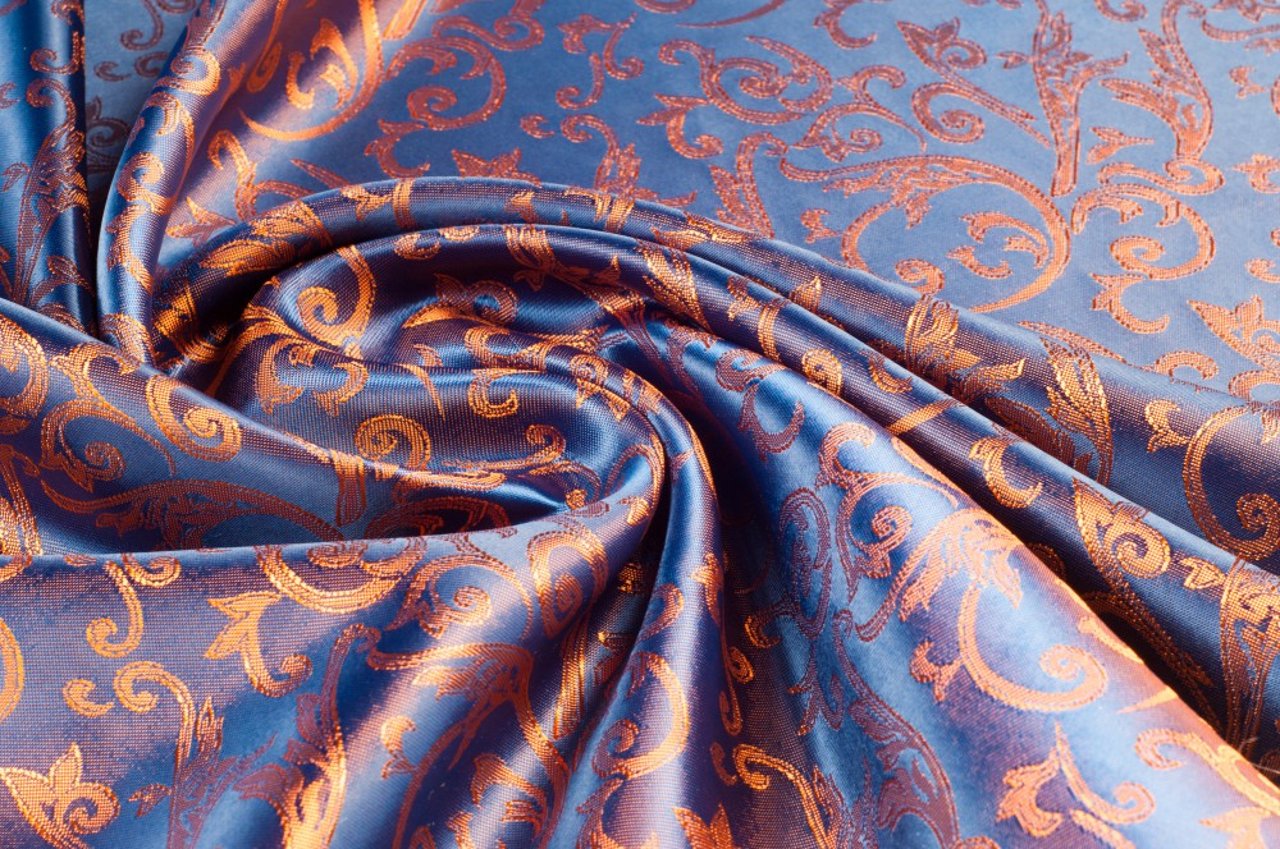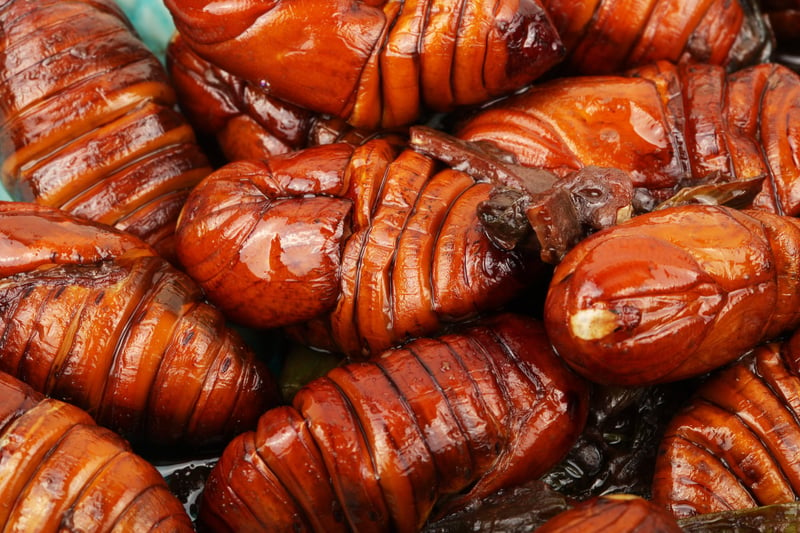
Did you know that silk production entails a level of monstrosity and barbarity that would make any sensitive person blanch?
Beauty or Savagery
You want to look attractive and gorgeous for a party or intend to make heads turn. You want to look fashionable and glamorous and appear like a beauty queen. What better attire to adore yourself with than silk, pure silk, to dazzle in a social gathering. The material is luscious, soft, smooth, glossy and lovely. It is something that many women (and some men) crave along with diamonds and fur. But as with diamonds and fur, silk production entails a level of monstrosity and barbarity that would make any sensitive person blanch. Unfortunately, very few people are aware of, and even less care for the savagery involved in pure silk production.
Silk moths are getting killed to meet the fashion needs
Let us put it this way. When we talk about animals, most of us would be horrified if we saw animals beings being boiled, roasted or skinned alive. And most of us would find it abhorrent to kill butterflies. However, in silk production, every day, millions, if not billions of innocent silkworms and silk moths are killed only to cater to a vain fashion need of one species. How does it happen?
The history of Silk
Let us turn to history. It is said that silk was discovered thousands of years ago in ancient China when a princess was sitting beneath a tree that had many cocoons wrapped in silk. One cocoon accidentally fell into her cup and she realized that the fine silk thread unwound itself when she extricated the cocoon. She took an immediate fascination for the fabric, regardless of the fact that the silkworm inside had been boiled to death. She conveyed her enchantment with the fabric to the royal court who got taken in and started harvesting silk in large quantities. The lives of the animals hardly mattered, presumably because they were just considered to be insects not worthy of any ethical obligation, just as they are now.
For a long time, China kept this secret and then slowly the art (if mass killing can be called an art) spread to the western world and travellers crisscrossed continents in search of this valuable fabric. As the secret of making silk came out of China, more countries took a fascination for the fabric. India became a major silk production centre.
For one meter of silk fabric, 3000 to 15,000 silkworms are boiled alive
For silk garments, for one meter of fabric, 3000 to 15,000 silkworms are boiled alive. The silk production process starts with the female silkmoth laying eggs and being crushed and ground to pieces immediately after producing eggs to check for diseases. Remember that the silk has to be the purest and finest quality with the best quality of sheen and dazzle, never mind if the creature who originated the material has to brutalized to death. The male silkmoths are dumped in garbage cans and are also chopped to pieces in grinders. Some gratitude that but not unnatural for the human species to exhibit to other animals.
The silkworm feeds on mulberry leaves and laboriously spins a cocoon after revolving thousands of times for just one cocoon. The valuable silk filament covers the cocoon and the silkworm stays inside undergoing metamorphosis to become a silkmoth that would eventually emerge from the structure to the sunny world outside. But for this natural magic to happen, the emergent silkmoth has to pierce his way through the cocoon making a hole in the process and cutting through the silk strands. This is too much for us, is it not? How dare a mere insect destroy his own creation that we covet so that it can adorn us? So the cocoon is thrown in boiling water and the silkworm dies an agonizing death so that the fine and intact silk threads can be unwoven intact. Of course, there are other methods of killing silkworms inside cocoons, piercing them, baking them and electrocuting them.
People think, “It is only a worm,”
Compared to other forms of animal cruelty, silk production has not had the attention of animal welfare and rights activists it deserves. One principal reason is perhaps that it is easier to identify with a cute mammal or bird or even a reptile than an invertebrate. People think, “It is only a worm,” conveniently forgetting that the worm is the precursor to the moth which in essence assumes the same form as a butterfly, a creature that has been the centre of human myth, folklore and poetry for millennia. Many of us would not wilfully harm butterflies but we do not mind crushing and hammering their cousin silkmoths to death.
The Human Vanity
Indeed the silk topic brings out the dichotomous aspect of human nature. Recently with greater awareness of animal issues, there have been concerns voiced about the methods used in silk production. Efforts have been made to replace the traditional violent method with a more animal-friendly one resulting in what is known as Ahimsa silk. In ahimsa silk production, the silkworm is allowed to complete the full life cycle and is not killed prematurely. It is also reported that there are some forms of wild silk where the silkworm is allowed to complete the natural lifespan. However, due to inconsiderate selective breeding, silkmoths that now emerge out of cocoons are pretty much incapable of living out their natural lives and die soon after. The whole aspect of cruelty in silk production is really a troublesome one because this animal species seems doomed one way or another, and plainly because of human vanity.
Silk is an arbitrary luxury product
It has been posited that the fate of silkworms is trivial compared to other animal cruelty issues and indeed other problems but some individuals have stood up for the rights of all creatures to be treated with respect. After all, silk is an arbitrary luxury product and no wearer of silk would lose anything if he replaced this fabric with a less cruel one.
India’s silk industry
Apart from killing thousands of animals, the pure silk industry abuses humans too. Hundreds of thousands of children, some as young as five, toil as “slaves” in India’s pure silk production industry, enduring beatings, burns and 12-hour days, according to Human Rights Watch. They are bonded labour, powerless children doomed to remain bound to their employers because they are recruited to work in exchange for a loan to their families that they can never earn enough to repay. The human rights group interviewed children, employers and officials in three states, Uttar Pradesh, Tamil Nadu, and Karnataka, which form the core of India’s silk industry, and produced a shocking picture of a world of cruelty and gross exploitation. Their 85-page report concluded that “at every stage of the silk industry, bonded children as young as five work 12 or more hours a day, six and a half or seven days a week under conditions of physical and verbal abuse.
Pulse Of The Fashion Industry
It has also been found in a survey named ‘Pulse Of The Fashion Industry’ in 2017 that silk is the second most environmentally destructive fashion material. So apart from being cruel to animals and abusive to children, pure silk production damages the environment as well.
The humane options for avoiding cruelty in silk production include :
- Avoiding silk altogether in all forms, the best option.
- The second best option is to wear artificial silk since it is made of a material other than silk including synthetic cloth and rayon. There is also bamboo silk that one can wear which does not harm animals.
Silkmoths deserve to live. Let them live.
